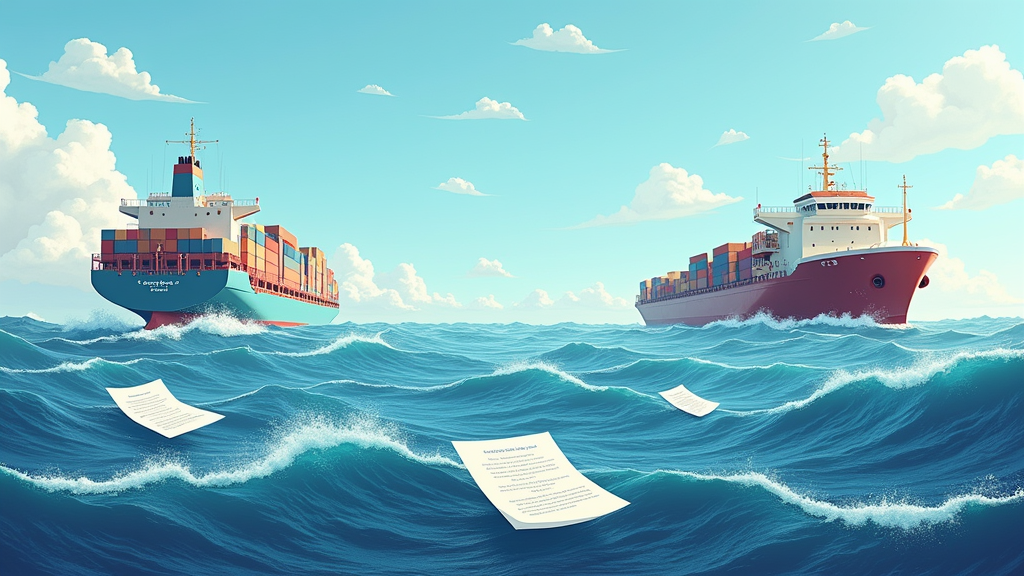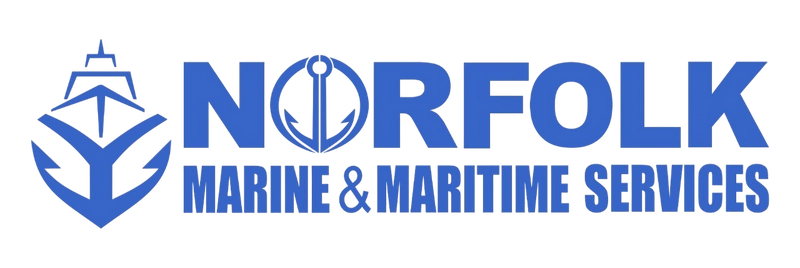
Marine contracts on a large scale require careful planning and clear strategies. I have seen that managing these contracts successfully means understanding every detail that touches on legal, technical, and operational factors. Marine contracts involve oceans of paperwork, regulatory requirements, and the challenges that come from working with multiple stakeholders. Recognizing these core issues early makes contract management less overwhelming and more precise.

Core Elements of Large-Scale Marine Contract Management
Large-scale marine contracts work at the intersection of maritime law, engineering, and global trade. The contracts govern operations involving cargo shipping, offshore construction, or maritime logistics. A sound marine contract outlines responsibilities for both the contracting parties and third parties involved in logistics and risk management. Detailed clauses can address safety, environmental issues, liability, and compliance with international laws. Understanding these components helps in designing contracts that support reliable and efficient marine operations.
It is important to have detailed documentation that clearly assigns roles and responsibilities. Breakdowns of key terms, delivery timelines, and financial arrangements are integral. Decision-makers need to assess potential risks by considering factors such as weather conditions, port operations, and emergency response. Having clear protocols in the contract minimizes disputes and improves collaboration between different parties. Over time, my experience shows that well-defined contracts reduce misunderstandings and provide a solid foundation when challenges arise.
Getting Started with Marine Contract Management
Before signing any large-scale marine contract, it is important to review the entire document meticulously. I recommend that stakeholders invest time in understanding each section of the contract. This initial review sets the stage for smoother operations and helps avoid pitfalls later. The review process should focus on identifying key components such as performance obligations, legal liabilities, and the terms for dispute resolution.
The start of any successful marine contract management process involves building a team that knows contract law and maritime operations inside out. A mix of legal experts, project managers, and logistics officers can provide a balanced perspective. With a knowledgeable team, maintaining clear communication and monitoring progress becomes a more attainable goal.
My approach usually begins with mapping out the contract requirements. This can involve the following steps:
- Select clear benchmarks: Identify performance indicators and compliance requirements. This makes evaluating the contract easier during execution.
- Establish communication channels: Develop a network that includes all stakeholders. This ensures everyone is connected and informed.
- Review legal clauses: Focus on clauses that impact risk allocation, payment schedules, and penalty conditions. Understanding these clauses guides decision-making when unexpected circumstances arise.
- Verify technical parameters: Confirm that technical specifications align with operational realities, particularly for complex offshore projects.
- Prepare contingency plans: Effective contract management includes planning for delays, external disruptions, and other emergencies.
Each of these steps plays a role in transforming initial agreements into executed contracts that serve both parties effectively. It also builds confidence and clarity among those responsible for overseeing operations at sea.
Essential Considerations and Challenges in Marine Contract Oversight
Marine contracts cover a range of topics from operational details to financial considerations. One challenge lies in the unpredictability of environmental conditions. Contracts might specify delays in adverse weather or include provisions for safety protocols during natural events. Consistent monitoring of conditions and proactive adjustments have proven effective in overcoming these challenges.
Another area that demands attention is compliance with international and local maritime laws. Contracts often include clauses addressing compliance protocols and standards. Adhering to these standards is very important for ensuring that the contract meets global regulations. I have found that continuous education and staying sharp on legal changes are key to avoiding disputes and fines.
For clarity, here are some key areas that usually require special focus in marine contract management:
- Contractual Clauses: This involves detailed terms related to delivery, quality assurance, and penalties for non-compliance. Being precise in wording helps reduce ambiguities later on.
- Risk Management: Weighting potential risks, from weather disruptions to political or economic uncertainties, is very important. I normally advise building in generous allowances for unpredictable events so that plans can tone down potential disruptions effectively.
- Logistics Coordination: The coordination between shipping, cargo handling, and port management is complex. Making allowances for variability in delivery schedules can prevent major standstills.
- Financial Arrangements: Payment schedules, currency risks, and performance bonds are critical parts of the contract. Ensuring that financial flows are secure is a practical step in contract planning.
Each of these elements can affect contract performance in significant ways. I have observed that a detailed breakdown assists all parties in understanding their responsibilities and the risks they face. This clarity is beneficial during both normal operations and unforeseen disruptions.
Challenges in managing large-scale marine contracts may also include disagreements over interpretation. Many disputes have their roots in ambiguous language. To reduce this risk, I work alongside legal experts to craft clear and concise language throughout the document. This helps prevent misunderstandings and creates a structure that is easier to enforce.
Advanced Strategies for Taking Up a Notch in Contract Management
Once the basics are in place, advanced strategies help refine the oversight and operational execution of marine contracts. Modern technology plays a valuable role here. Digital management systems allow data tracking, document storage, and real-time updates on in-field operations. I often recommend using cloud-based platforms to ensure that everyone has access to the most updated information.
Beyond technology, effective risk management will always be central. I have seen that integrating predictive analytics helps in anticipating risks. Data derived from weather forecasts, traffic logs at ports, and historical operating conditions enable decision-makers to adjust operations promptly. Advanced strategies also include regular audits and performance reviews. These help pinpoint areas that need refinement and celebrate effective practices.
The following advanced tips have proven valuable:
Embrace Technology for Communication: Deploying robust communication tools keeps teams on the same page. Whether it is video calls, instant messaging, or specialized contract management software, technology helps maintain clarity and timely updates. Reliable tech tools are a practical solution for teams dispersed across different regions.
Implement Regular Reviews and Audits: Periodic examinations of contract performance reveal trends that may not be visible in day-to-day operations. Regular reviews also help in updating clauses as needed and in ensuring that all parties adhere to agreed standards. I believe that scheduled audits contribute a lot to continuous improvement in contract management.
Adopt Flexible Contingency Plans: Fixed plans rarely account for every unforeseen event. Flexibility allows teams to adjust operations in light of new challenges such as unexpected port closures or sudden changes in weather patterns. Preparedness paired with flexibility means that contracts can handle disruptions without major operational delays.
Take Advantage of Data and Analytics: Using quantitative data on vessel performance, cargo handling, and even client feedback provides clarity on areas that need adjustment. Data-driven decision-making builds a resilient framework that reacts well to shifting conditions.
These strategies, when applied consistently, can refine contract management processes and align them closely with operational goals. The integration of technology and regular performance benchmarking has significantly improved outcomes in my past projects. These advanced strategies offer a pathway to smoother operations and risk reduction.
Frequently Asked Questions About Marine Contract Management
People often ask about the specifics of marine contract management. I have compiled some common questions to provide insight into aspects that might be unclear:
Question: What are the initial steps in managing a large-scale marine contract?
Answer: Start by gathering all details related to performance metrics, timelines, and legal obligations. It is important to set up a team that includes experts in contract law and maritime operations. Understanding your contract in its entirety forms the best base for effective management.
Question: How do I ensure that all parties comply with contractual terms?
Answer: Establish clear communication channels and regular check-ins. I recommend periodic audits and reviews that catch any deviations early. Well-defined milestones and performance metrics help in holding each party accountable. Coordinating legal and operational reviews is a technique I rely on consistently to ensure compliance.
Question: What role does risk management play in marine contract oversight?
Answer: Risk management is central to successful contract execution. Building flexible contingency plans and monitoring external factors like weather and port activity can safeguard operations. I have seen that a proactive approach to risk helps tone down potential disruptions and keeps operations on track.
Final Thoughts on Managing Large-Scale Marine Contracts
Marine contracts, due to their scale and complexity, demand an approach that combines detailed planning with flexible management strategies. I have found that understanding every element—from legal intricacies to operational risks—helps in crafting contracts that are both clear and resilient. Taking the time to map out performance indicators, establish dependable communication channels, and integrate advanced tools makes the overall process more efficient in the long run.
Large-scale marine contract management is not an area for shortcuts. It requires continuous attention to detail, routine reviews, and updates to deal with emerging challenges. When well-managed, these contracts deliver more than just legal compliance. They provide a framework that supports vast operations with multiple stakeholders while ensuring efficiency and safety at sea.
The practices I use may evolve over time, but the principle remains the same: clarity, accountability, and regular reassessment lead to better outcomes. With these measures in place, managing a marine contract becomes less of a chaotic challenge and more of a structured process that helps unlock a project’s full potential.
Large-scale marine projects involve many moving parts. However, when the contract is thorough and the management approach is proactive, the potential for successful outcomes increases substantially. I encourage anyone involved in these contracts to invest in solid planning and adaptive strategies that meet both current needs and future uncertainties in maritime operations.
Future Trends and Directions in Marine Contract Management
As global trade continues to expand and technology reshapes industries, marine contract management is also experiencing a next stage of growth. Emerging innovations in digital tracking, blockchain for secure transactions, and real-time communication platforms are changing the way contracts are monitored and executed. Companies are now able to integrate systems that provide instant updates and actionable insights, ensuring that decisions are made based on current data.
Furthermore, environmental considerations are gaining more attention. With stricter regulations and a growing emphasis on sustainability, contracts increasingly incorporate green clauses and eco-friendly mandates. These provisions not only help organizations comply with new standards but also build a next-level cool reputation for companies responsible for environmentally conscious practices. Stakeholders are encouraged to review these clauses closely and work with environmental experts to continuously adjust parameters that support sustainable operations.
The rise of artificial intelligence in predictive analytics is also reshaping risk assessment techniques. By processing vast amounts of data from weather patterns, port congestion statistics, and historical performance records, AI tools can now help forecast potential disruptions more accurately than ever before. This next stage of technology assists decision-makers in planning more effectively and in structuring contracts in a way that accommodates rapid changes in the market.
Moreover, the competitive landscape is pushing industry leaders to rethink traditional methods. Collaborative platforms are replacing outdated systems, and teams are increasingly required to think outside the box when developing contract terms. Integrating feedback loops, regular performance reviews, and agile adaptation strategies ensures that every marine contract is not only legally sound but also capable of evolving in response to market demands. This approach has already proven successful in numerous projects, demonstrating that the future of marine contract management is bright and full of potential.
With these advances, it is clear that staying informed about future trends is really important. Networking with industry professionals, attending maritime conferences, and investing in continuous training are some effective ways to keep your strategies fresh and relevant. The ability to adapt quickly and to take advantage of emerging tools can make all the difference in executing successful marine contracts. In this rapidly changing industry, embracing innovation and maintaining a forward-thinking mindset will be essential to remain competitive and efficient.
By combining established best practices with an eye on future developments, organizations can build a resilient framework for contract management that stands the test of time. Continuous learning and technological upgrades are not merely optional; they have become key drivers of success in the complex world of marine operations.


